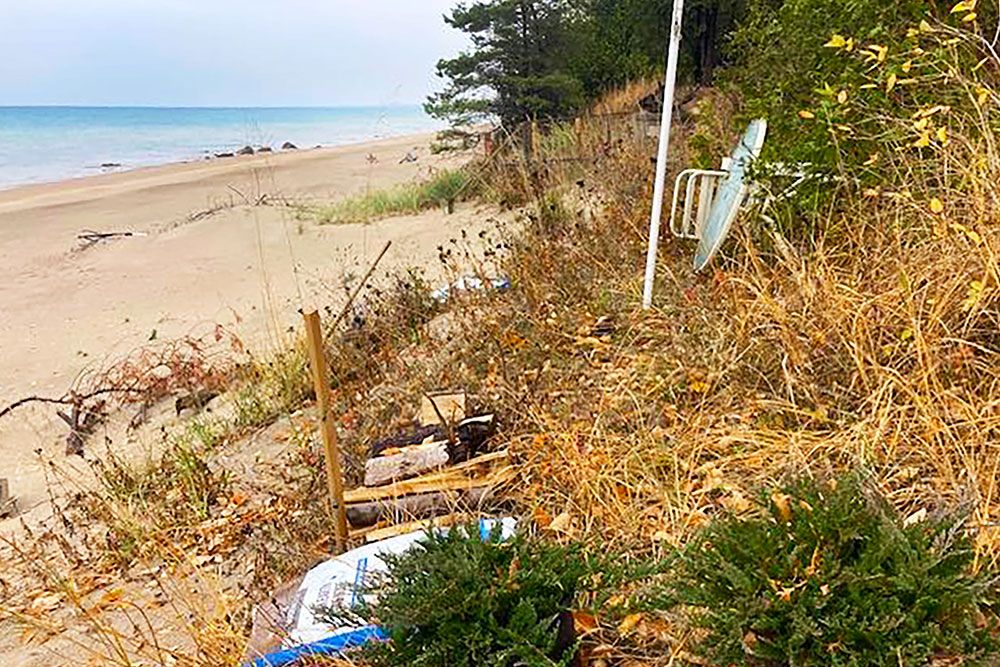Restoring beach dunes in Pine River Watershed

Pine River Watershed Initiative Network promotes Shoreline Reforestation Initiative
The Pine River Watershed Initiative Network (PRWIN) is encouraging residents along shoreline beaches to restore beach dunes.
In the spring of 2025, PRWIN is promoting a Shoreline Reforestation Initiative. Spring Junipers will be delivered at the end of May.
Wave action and high winds, especially in those recent years when lake levels were high, eroded a great deal of the shoreline dune area.
As lake levels declined from higher levels, a wider beach area was created and more sand was exposed to wind erosion, especially during autumn and winter.
The beach grass is established but larger plants with stronger root systems are needed to rebuild the protective shoreline dunes for the next period of higher lake levels.
One of the best low-profile options to assist with this restoration are Junipers (Juniperus horizontalis) or 'Blue Chip.' Junipers catch the sand and build the dunes during the high wind and blowing snowstorms in the autumn and winter seasons.
The roots hold the sand in the spring when the high winds return.
For the restoration effort to be most effective, the Junipers must be planted on the Swale or Back Dune Area on the lakeshore. Over time the dunes will build up the sand needed to again withstand the high-water period along Lake Huron.
Lake Huron has high and low energy beaches. High-energy beaches, like Point Clark, see a ‘give-and-take’ of sand throughout the year. Low-energy beaches, like Sauble Beach, have more sand removed by wind and wave action, than is added.
On low-energy beaches, protecting the sand is essential because they’re slower to recover. In high-energy beaches, multiple dunes form over time providing a 'sacrificial buffer' during high lake levels. Vegetation grows larger further inland from the water’s edge, transforming from dune grass and sedges, to shrubs, and eventually trees. This ‘succession’ of dunes is natural and is unique habitat for many rare species.
